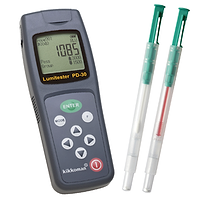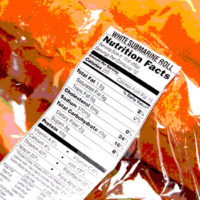Imagine this scenario: You go to the market for a gallon of milk. You pick up a carton in the dairy aisle, and then log on to the Internet from your Smartphone to see which farm that gallon came from earlier that day. You see that this particular gallon came from Dolly’s Milk Farm, and you were just at Dolly’s last week with your kids for ice cream and it was delicious. So you buy that gallon of milk with full confidence that it, too, will be of the highest quality and taste.
Sounds like a dream scenario...couldn’t be possible, right? In fact, it is possible with the technologies available today, which can help track and trace ingredients throughout the entire manufacturing process, from raw materials to the final product. These technologies not only tell consumers where their products come from but are critical enablers for food and beverage manufacturers to improve food safety and prevent recalls.
Line of Sight across the Supply Chain
With food recalls on the rise, ensuring food safety and protecting consumers are imperative for food and beverage manufacturers. To minimize risks, they must safeguard the entire supply chain with transparency, providing line of sight into where ingredients actually come from.
Yet this job has become trickier as global food and beverage manufacturers can have upwards of hundreds, even thousands, of different suppliers for everything—from raw materials to food contact packaging.
So how can this complex supply network be managed to improve food safety?
Knowing Product Origins with Track and Trace
Today’s technologies, powered by the industrial Internet, enable manufacturers to connect intelligent machines, advanced analytics and people at work to drive greater productivity and efficiency. Delivering business and operational insights and a level of transparency like never before—technology is transforming the way manufacturers can work to improve food safety.
For example, let’s go back to the milk scenario presented earlier, a real-life example. With the latest track and trace software technology, this milk producer monitors the milk flow in the plants, and each time milk is transferred from one location to another, it records the movement automatically. A production barcode is then printed in the packaging department, which links the milk to the farmer, and consumers can go online and immediately discover which farmer delivered their milk—tracing the purchased product back to the farm.
The technology solution delivers robust genealogy capabilities, connecting data from all relevant sources, so the producer can identify which raw material, equipment, production lots and sub lots were involved in each product—allowing it to quickly understand the impact on its products and supply chain. If, for instance, a recall were to occur, the producer could quickly and easily trace the product back to its origin and immediately address the issue at the source.
Matching Labels with Ingredients: 100% of the Time
Food safety risks are also linked to the mismatch of ingredients and packaging, which is the number one cause for food recalls today because of allergens that are contained in the product, but not disclosed on the label. While the food manufacturers have certain measures in place to aid in this effort, they are sometimes not enough. Manufacturers need to guarantee that the ingredients in the packaging match the label—100% of the time. There should be no acceptable margin of error.
Today’s technology converges machines and intelligent data, which allows manufacturers for example, to scan the bar code on a box, can or bottle, and instantly know if there is any variation between the label and the actual ingredients. If there is some sort of discrepancy, the product will be re-inspected before leaving the plant and the entire lot can be put on hold until the plant manager can troubleshoot the problem and fix it.
Manufacturers can implement another step in quality control, serving as the door to a vault so that only the products with the right combination will be able to open it. The added step can ensure that a mislabeled product never leaves the plant. Once the troubleshooting and problem solving has been documented—electronically, of course—the information can be used to improve best practices.
This application of the technology could put an end to undisclosed allergens being present in food products. Ingredient labels help protect against exposure to life threatening allergens, therefore need to be 100% accurate, 100% of the time. The ability for manufacturers to match ingredients to packaging could help eliminate one of the biggest health risks today.
Take Action in Solving Food Safety Risks
Food safety risks present a legitimate urgency among manufacturers to take more action. By leveraging today’s Industrial Internet-enabled technologies, they have the power to track and trace ingredients through each processing step across the supply chain and more accurately match labels to ingredients. These capabilities are critical to minimizing food safety risks and improving product quality, which in turn, boost consumer confidence—enhancing a company’s marketing brand and bottom line.
Katie Moore is global industry manager for food and beverage at GE Intelligent Platforms.




